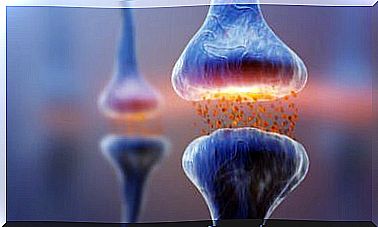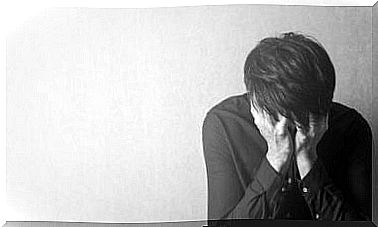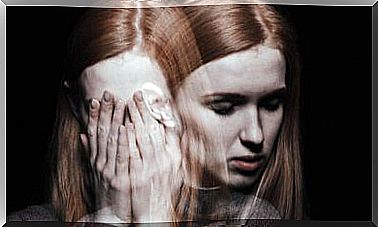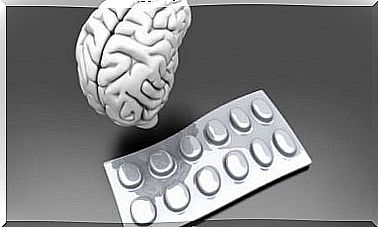Drive Phobia: What Is It And How Is It Treated

Impulse phobia is the fear of following an impulse, losing control, and hurting others or oneself. Some diagnostic classifications consider impulse phobia as a variant of Obsessive Compulsive Disorder (OCD). It is an intrusive thought that invades the subject’s mind. So he performs some type of behavior or thought (compulsion) to lower the anxiety that that thought causes him. Here’s how to identify drive phobia and how it’s treated.
How to identify drive phobia?
From a professional point of view, drive phobia is a variant of OCD. However, regardless of considering it as a type of OCD or as a phobia itself, we are talking about a diagnosis characterized by intense fear of one’s own impulses. The main clinical characteristics that define this disorder are:
- Invasion of thoughts that revolve around following an impulse and losing control.
- The content of this thought has to do with the anticipation of an assault. Both to oneself or to others.
- An intense fear for the mere fact of experiencing such thoughts.
- Carry out preventive or avoidance behaviors to prevent these types of thoughts from becoming reality.

What are the most frequent urges?
People who come to the office and are diagnosed with impulse phobia report thoughts that involve harming themselves. In the same way, they are assaulted by thoughts about harming their relatives (partner, parents or children). For example, jumping off the balcony, steering the car while driving on the highway or jumping into the subway. In all cases, a thought-action fusion is observed in the patient. The development process of drive phobia is:
- The person has a thought or image where he “sees” carrying out an impulse and losing control of himself.
- That thought or image is valued as catastrophic
- Therefore, the person uses all the psychological resources he has to “erase” those thoughts or images. Because the focus on thought is the wrong strategy, anxiety soars. Therefore, anticipatory thoughts become even more powerful.
- As the content of the thoughts cannot be controlled, it reinforces the power of the idea that alludes to the loss of control, intensifying the feeling of fear.
Most frequent consequences of impulse phobia
Any type of OCD or phobia causes a significant decrease in the quality of life of the patient. This occurs as a result of the person making an effort to control fear and avoid anxiety situations. Thus, progressively and without realizing it, he ends up giving up different aspects of his personal life, consuming a good part of his energy trying to control fear.
Likewise, one of the main consequences of impulse phobia is the feeling of having the enemy within oneself. Being an egodistonic disorder (there is a dissonance between what the person thinks and wants), the self-demand to control thoughts is very high. At the same time that the person has the feeling that he is fighting against himself.
That is, the obsession and fear of the impulse invade the patient’s attention. But he believes that, as it is something external, he can control it. By not being able to do it, he or she feels that it is he or she who is causing the obsession and therefore the feeling of “fighting against what my head tells me.” In accordance with time, this internal struggle leads to pictures of anxiety and depression, which must also be addressed in therapy.

How is the treatment for impulse phobia?
Treatment for impulse phobia, whatever the object of obsession (regardless of whether it is hurting yourself or others) is psychological. In addition, it can be combined with psychopharmacological treatment. Broadly speaking, the therapeutic approach to this phobia follows the lines of treatment used for cases of OCD. Psychotherapy enables the patient to achieve changes in the following points:
- Understand the cause of the problem and its current operation.
- Assess and identify the solutions tried to resolve the disorder and which have failed.
- Promote tried solutions that do work.
- That the patient is able to understand how his mind works and his disorder. And so take control of what happens to you.
- Detach the person from your thoughts. Understand that thinking something does not even mean doing it. Nor does it increase the probability that it will occur.
- Recover aspects of life that the person values but has neglected.
- Prevent relapse and consolidate acquired psychological tools.

Finally, it should be noted that, although there are different types of psychological approaches to design treatment in cases of impulse phobia, there are only studies on the efficacy of cognitive-behavioral strategies. In this sense, Bonet, J. (2001) highlights the importance of confronting fear until accustoming the emotional response, preventing the thought that generates discomfort from being avoided.
Drive phobia: final thoughts
If you have an impulse phobia, keep in mind that it is a psychological problem. Therefore, the sooner you face it, the sooner you will free yourself from it. No choice; fears only disappear if you face them directly. So, in these cases, the psychologist is your best ally. You can make two decisions: not to face the situation and that everything remains as it is. Or, on the contrary, face your fears and discover what is happening in your case.









